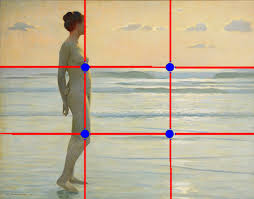CAN MATHEMATICS BE BEAUTIFUL?
If you take a look inside a child’s math jotter you will most likely find some numbers written on parallel lines to form equations and answers. But, is it possible to use math to form or create something which is not numbers based? Can we create something more exciting and creative other than stereotypically dull equations found in a child’s maths textbook?
Using Maths to Enhance Art
To my surprise, we can! We can actually use maths to ENHANCE and IMPROVE our abilities within the creative arts sector. Barrow (2014) suggests that maths and art are subjects which can be seen as coming in ‘hand in hand’ with one another. He also emphasises that patterns – which are the fundamental basis of art – are all based upon mathematical concepts (Barrow, 2014), such as symmetry, angles, rotation, shape etc – what Ma (2010) describes as the basic ideas of a fundamental understanding of maths. Buck (2011) agrees with this, saying that the patterns that artists create all have their individual algorithms, a mathematical set of instructions, which they must follow in order to correctly create the pattern.
Rule of Thirds
Even photographers can use maths to enhance their ability to capture aesthetically pleasing images. By splitting their lens into nine equal squares/rectangles, they can position the main subject of their photo along the intersecting lines of the squares. This opens up space behind or around the subject which the eye is then drawn to, meaning there is more than just the subject of the photo that is attractive to the eye at first glance.
 Image 1 – Rule of Thirds
Image 1 – Rule of Thirds
Self-Portraits
We can also use maths to transform ourselves into expert portrait drawers (ish)! By implementing basic concepts of shape and fractions into a portrait piece, we can enhance the end product. Using these concepts increase the likelihood of the features of the face being proportionate to each other, and therefore, making it more realistic than a piece that has not used maths. These basic concepts can be implemented when portrait drawing due to the symmetrical nature of the face, which serves as a source of beauty in itself (Zaidel and Hessmian, 2010).
For example, through splitting the outline of the face into quarters we can correctly identify where each of the facial features should be placed in respect of each other. Using maths, we can work out that the eyes should be positioned half way up the face and a fifth of the width of the face in from the outline (See picture below).

Image 2 – Using maths to sketch a face
I attempted to use this technique to draw a portrait of a face. Here is the before and after…

It really amazed me how different and how much better my second attempt at drawing a face was using just a little bit of maths! Being someone whose art ability is incredibility limited, it was surprising how easy the maths made drawing an in proportion and to scale face. Thus, this small adjustment to the way I approached this task, in my opinion, increased the aesthetic nature of my work.
Using Maths to Create Art
But it doesn’t just stop there! Maths can also be beautiful when used in solitude, not in conjunction with other subject areas – we can use maths alone to CREATE art.
Curves of Pursuit
By repeating a shape at the same interval multiple times, we can create even more shapes and beautiful patterns.
For example, using the square. By drawing a square and then drawing another square within it by measuring 1cm away from the right of each of the corners and then jointing these points up, we can create another square within it. When you repeat this action, you end up with something like this…
As you can see, I have ended up with a spiral motion within the original square, as well as individual triangles running through the curves. This type of mathematical phenomenon demonstrates how using one simple shape can create a very dynamic new image which is very pleasant to look at. I think that is amazing that we can use maths to create such intricate patterns, all from using a simple shape.
From my research into maths and art, I now understand the importance of being able to apply mathematical knowledge and skills to wider areas of society. I will no longer view maths as an isolated discipline of which numbers are the underlying fundamental basic idea (Ma, 2010). I hope to gain a better understanding of how maths can influence our society (other than in the creative arts) by exploring other sectors which it is intrinsically connected with, such as science and engineering.
In conclusion, the end result of mathematics does just have to include formulae, numbers and equations. It may result in beautiful aesthetics such as patterns, painting, images, photographs, tiling and much more. We can use maths to enhance our ability within the arts such as through using fractions and shapes in portrait drawing, we can increase how realistic the end drawing looks. You can also use maths alone to create art. Again using the basic idea of shape, Ma (2010), we can create beautifully aesthetic patterns from just one simple shape, for example, in curves of pursuit images.
References
Barrow, J.D. (2014). 100 Essential Things You Didn’t Know You Didn’t Know About Maths and the Arts. London: The Bodley Head. Available at: https://www.vlebooks.com/vleweb/Product/Index/673669?page=0 [Accessed 2 November 2018].
Buck, G. (2001). MATHEMATICS AND ART: Algorithms of Boundless Beauty. Science, 292(5516), pp.445-446.
Ma, L (2010) Knowing and Teaching Elementary Mathematics. Oxon: Routledge.
Zaidel, D. and Hessamian, M. (2010). Asymmetry and Symmetry in the Beauty of Human Faces. Symmetry, 2(1), pp.136-149.
Image 1 – Rule of thirds applied on Mädchen am Strand (2015) Wikipedia. Available at: https://commons.wikimedia.org/wiki/File:Rule_of_thirds_applied_on_M%C3%A4dchen_am_Strand.jpg [Accessed 2 November 2018].
Image 2 – Maths careers. Available at: http://www.mathscareers.org.uk/article/figure-drawing/ [Accessed 2 November 2018].

